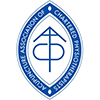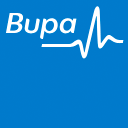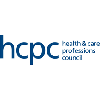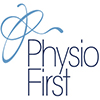Hockey
 Hockey is played in 132 countries and is the second most played team sport after football. It is estimated that 15% of hockey players are injured during a single season, and that injuries cause players to spend 11% of the total hockey season training and playing at less than full capacity.
Hockey is played in 132 countries and is the second most played team sport after football. It is estimated that 15% of hockey players are injured during a single season, and that injuries cause players to spend 11% of the total hockey season training and playing at less than full capacity.
Types of Hockey Injuries
- Most serious hockey injuries result from being struck by the stick or the ball.
- The most common injuries presenting to hospitals are:
- open wounds,
- fractures,
- sprains and strains
- bruising and lacerations.
- Injuries presenting to hospital are predominantly to the upper limb (mostly injuries to the hand and forearm), face and lower limb (mostly ankle, foot and knee injuries).
- Overuse injuries to the ankles and lower back are common.
The Physiotherapy2fit team of specialists Physiotherapists will:
- Diagnose the injury
- Provide advice on rehabilitation and length of healing
- Promote healing of the injured tissues and to control the inflammation and pain
- Thoroughly rehabilitate the injury restoring full flexibility, strength, balance & proprioception and correcting any muscle imbalances that may have developed
- Provide individual sport specific exercise programmes
- Use sport-specific functional testing and rehabilitation to ensure that you are ready to return to training and competition
- Discuss strategies to reduce recurrence of the injury
If proper management is not undertaken, you may return to playing too soon despite instability, lack of mobility, proprioceptive disturbance and muscle weakness. This will greatly enhance the risk of prolonged pain and re-injury. This ultimately affects your performance for the length of time you are not properly rehabilitated.
For ongoing structured, supervised exercise excellent for becoming ‘hockey-fit’ you could join our Pilates and Fitness Conditioning classes. These are fun small group classes that incorporate small equipment including the BOSU, gym balls and resistance apparatus to challenge balance, tone and build muscle strength without losing flexibility. The maximum class number is 6 so you can be sure to get individual attention throughout ensuring you are performing exercises for the full benefit.
“Do you have a fracture?”
One of the latest technology advances of modern Physiotherapy is the introduction of LIPUS. This new technology is able to reduce your healing time by up to 50%. Thats 3 weeks instead of 6!
The sound pressure stimulation provided by the LIPUS (Low Intensity Pulsed Ultrasound) system accelerates the formation and union of fractured bone and promotes rapid recovery.
Research has shown LIPUS significantly reduces healing time compared to placebos.
Used by all premiership football clubs and the MoD this is cutting edge technology which is only offered as a last resort on the NHS.
Book an appointment today for and initial consultation and then hire our machine for daily use at home.
















